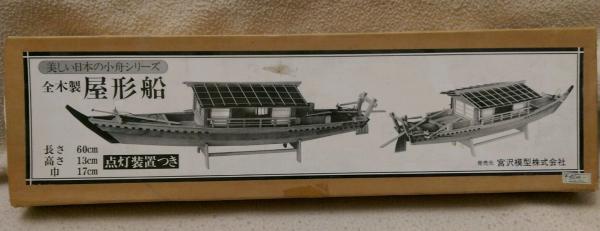-
Posts
1,046 -
Joined
-
Last visited
Content Type
Profiles
Forums
Gallery
Events
Posts posted by grsjax
-
-
Put a new blade on my 14" Delta clone and had problems getting the tension right. I would get it setup and start cutting and the blade tension would loosen. After going through everything I found the problem. The blade tension spring had failed and would not keep the blade tight. I was kind of surprised because I always loosen the tension when I am done and the spring is a pretty hefty one. The springs cost about $10 and are easy to replace. Lesson learned is to check your bandsaw over regularly with particular attention paid to things like springs that can fail.
- thibaultron, mtaylor and WackoWolf
-
 3
3
-
-
-
-
-
I picked up a load of avocado wood today. Anyone have any experience using it in model building?
According to the internet it works much like birch or big leaf maple. Color looks to be a light to medium brown. Haven't cut it into boards yet so don't know how the grain is going to look.
-
These are the articles I was referring to. If you can't find them in the on-line store at the NRG website email the journal and ask if they are available.
- Ronnberg, Erik A.R.: The Albatros - Swallow Reconstruction.
Nautical Research Journal Vol. 29, Bethesda, 1983. pp 90-92, ill. - Ronnberg, Erik A.R. Jr: Albatros - Swallow - Postscript.
Nautical Research Journal Vol. 29, Bethesda, 1983. pp 133-135, ill. - Gillmer, Thomas C.: Albatros - Swallow, Additional Comments.
Nautical Research Journal Vol. 29, Bethesda, 1983. pp 136.
- CharlieZardoz, thibaultron, Canute and 1 other
-
 4
4
- Ronnberg, Erik A.R.: The Albatros - Swallow Reconstruction.
-
Read "The Baltimore Clipper" by Howard Chapelle for a wealth of info on the design and construction of these ships. Be forwarned that the Harvey is not a real ship and in some ways doesn't really represent a Baltimore Clipper. There are also some excellent articles in back issues of the NRG journal (vol 29:91) on this very subject. I think they were in the mid '80s but you can check the NRJ index.
- Canute, CharlieZardoz, mtaylor and 1 other
-
 4
4
-
I have DesignCad 3D v21 which is made by the same company. Works very well.
-
That is a good idea. On the few areas that you need to sand, can you wet sand? I have wet sanded bondo on basswood with no problems, but I haven't done that on wood filler.
Good question. I have never tried to wet sand wood filler.
-
I use Elmers wood filler for a number of purposes and find it to work fine. Only problem is that sanding it makes a mess of find white power that gets everywhere. Today I tried a different method. I used a single sided razor blade as a scraper over the area that had been filled and it worked great. No dust and I got a very smooth finish. Just need to sand in a few areas that I couldn't get the blade into and a little finish shaping. End result is a good surface and far less cleanup.
-
-
All depends on what you want to do with the saw. As others have said a scroll saw is great for cutting tight curves but isn't very good for long straight cuts. A bandsaw does a great job of ripping and cutting gentler curves and will handle much thicker material than a scroll saw. Best thing is to have both but if you can only get one or the other it will depend on what you need it for most. If most of your cutting is tight curves in thin material a scroll saw is the way to go. BTW you can get 1/16" blades for a band saw that will cut some really tight curves.
-
Just my opinion so take it for what it is worth. I would say that each builder decided what size and thickness of plate to use based on experiance and availability. I don't think there was any standard in the industry. I know Lloyds published a set of specifications for insurance purposes but I do not know exactly when that was. If you know what Lloyds classification the ship was you could check to see what Lloyds requirements were but that would be a guide not an exact size.
- Canute, mtaylor and justsayrow
-
 3
3
-
I want a compact saw that will cut bulkheads/ keels (from ply, the thickest I expect to use about 5 mm) Also capable of ripping 5mm hardwoods into 1 mm strips for planking. I've read all the reviews. Size and price is an important issue, Proxxon and Dremel seem to be favoured, but I'm no nearer making a choice. Please help, Bob.
If you want a saw for ripping hardwoods a scroll saw may not be your best choice. A small bandsaw would do as well for cutting out bulkheads and be a much better choice for ripping lumber into strips.
-
Interesting French book that can be downloaded. http://gallica.bnf.fr/ark:/12148/bpt6k5699565s.r=Collection%20de%20plans%20bateaux
Website is in French but I managed to get the book downloaded in pdf format ok not knowing any French.
- tkay11, Doreltomin, RichardG and 3 others
-
 6
6
-
-
-
Found a kit that isn't by Woody Joe. I found it on eBay. It looks like an older kit, the price tag says 4500Yen which seems pretty cheap by todays standards. A friend that knows Japanese translated some of the kanji on the box. It is an "Edo Period Yakatabune" made by a company called Miyazawa. I did a google search but could only find a company that makes plastic action figures in Japan by that name. Anyone know anything about this manufacture?
-
RE: Popular Science plans. Try this website, http://www.popsci.com/archives. I believe they have all the back issues with plans. No charge to download them.
-
Machine carved hulls have enough extra to allow a little carving as needed. The method I use is to pick two points, one at the stem and one at the stern as reference points. Stretch a string between the points or use a straight batten to establish the center line. Smooth up the bottom of the keel being sure to keep it level. Mark the station lines on the keel. Using the station templates, the established center line and the station marks start working the hull into shape a little at a time. Remark the station lines as necessary. As long as the center line stays consistent you should be fine.
-
-
-





Bandsaw blade tension problems
in Modeling tools and Workshop Equipment
Posted
No the band saw is to old to be under warranty. The spring didn't break it just got shorter. I have seen this before but only in light weight springs. Could be a bad spring but I am not going to worry about it. Cheap and easy enough to fix.